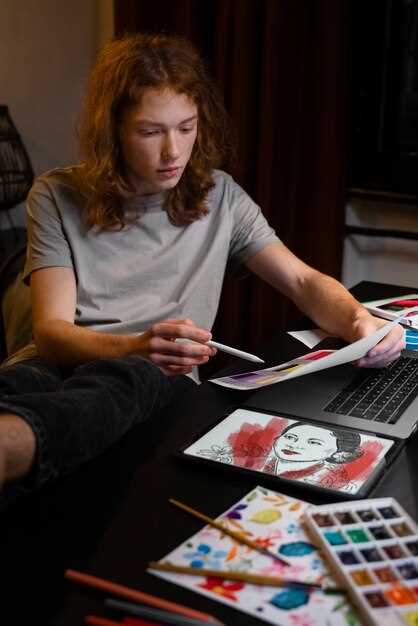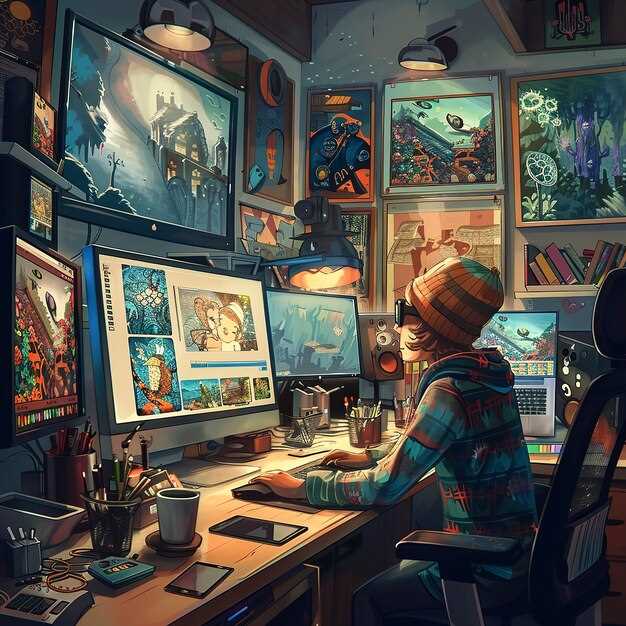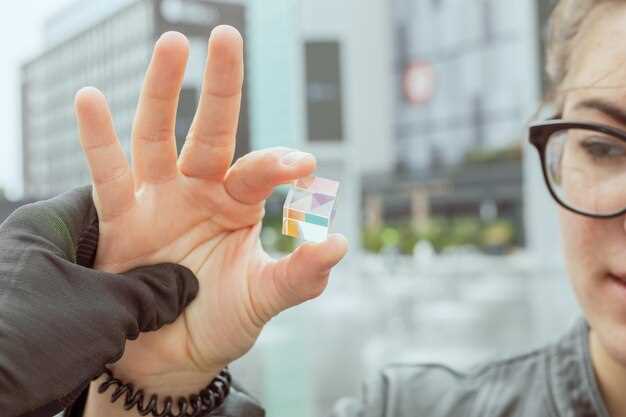Elevate your concept art techniques by harnessing the power of Photoshop and digital painting. Focus on mastering layers and blending modes. Layers allow you to separate elements of your artwork, making it easier to adjust specific parts without altering the rest. Experiment with different blending modes to achieve unique effects and textures, enhancing the depth and atmosphere of your scenes.
Pay attention to brushes and texture creation. Cultivating a personalized set of brushes tailored to your style can significantly enhance your workflow. Custom brushes can replicate traditional media effects or create innovative textures, providing unique visual signatures in your work. Texture creation offers endless possibilities to introduce realism or abstraction, depending on your project needs.
Understanding light and shadow is imperative for adding realism and mood to your digital paintings. Practice constructing dynamic lighting setups that highlight your subject effectively. Consider the direction, intensity, and color of light sources to add drama and form to your scenes. Mastery over these elements will dramatically improve the storytelling aspect and emotional impact of your artwork.
Expand your toolkit with advanced features like Photoshop actions and smart objects. Actions automate repetitive tasks, speeding up your process and ensuring consistency in your work. Smart objects allow for non-destructive editing, maintaining original image quality while enabling complex manipulations. These tools offer unparalleled flexibility and control, crucial for achieving polished, professional results in concept art.
Mastering Photoshop Tools for Concept Art

Experiment with Brush Settings to customize painting styles. Adjust the Size Jitter to introduce variability in stroke thickness, enhancing natural feel. Explore Brush Tip Shape and texture adjustment to replicate traditional art techniques.
Integrate Layer Masks for non-destructive editing. Use masks to apply precise alterations or remove elements without erasing the original layer. This allows for flexibility and easy adjustments, enabling iterative design process.
Leverage Adjustment Layers to modify color and tone. Apply Curves and Hue/Saturation for effective color correction. These tools enable seamless balancing of your concept art’s mood and atmosphere without altering the original art.
Employ Smart Objects to maintain image quality during transformation. Convert layers before scaling to avoid pixelation, ensuring sharp, high-quality finishes. Smart Objects allow link updates without losing any applied effects.
Utilize the Pen Tool for precision in creating paths and shapes. Mastery of anchor point manipulation provides flexibility in vector path creation, crucial for clean, scalable designs.
Take advantage of Blend Modes for dynamic interaction between layers. Overlay and Soft Light can enhance lighting effects, while Multiply is useful for shadow adjustments. Each mode offers unique impact to art composition.
Practice using Actions to automate repetitive tasks. Recording actions streamlines workflow, saving time when applying common effects or adjustments across multiple images.
Utilizing Layers and Masks for Complex Compositions
Start by creating individual layers for each element of your composition, allowing full control over details without affecting the whole image. Assign descriptive names to each layer, enhancing organization and efficiency. Use grouping to structure related elements, reducing clutter and simplifying navigation within your layers panel.
Leverage adjustment layers to fine-tune colors, contrast, and brightness in a non-destructive manner. This technique enables you to make global corrections that can be altered at any point without affecting the original layer data. Add effects such as gradients or patterns through layer styles for additional depth and visual interest.
Employ layer masks to isolate parts of an image, concealing and revealing areas without permanently altering them. With masks, you can create complex composites by painting with black to hide portions of a layer or white to reveal them. Utilize gradients on masks to achieve seamless transitions between elements, producing more cohesive and realistic scenes.
For more intricate control, consider applying clipping masks. These allow you to shape a layer so that it only appears in the confines of another layer, often used in texturing or applying artistic effects to specific portions of an artwork. Experiment with blending modes on layers to discover unique interactions between colors and textures, enabling a dynamic range of visual outcomes that enrich your composition.
Finally, maintain a systematic backup strategy for your layered documents. Regularly save copies, preserving the layered structure to allow for future adjustments or changes in direction. By integrating these techniques, you elevate your ability to craft intricate, detailed digital paintings with confidence and precision.
Creating Custom Brushes for Unique Textures
Begin by selecting the “Brush Settings” panel in Photoshop. To create a completely new brush, click on the brush tip shape and experiment with texture patterns. Consider scanning or photographing your own textures like fabric, leaves, or rough surfaces to use as a base.
Adjust parameters such as size, hardness, and spacing to refine the brush’s stroke. Use the “Scattering” option to add randomness and the “Shape Dynamics” to vary the pressure sensitivity, simulating real-world tools. Combine textures by using the “Texture” tab within the brush settings, choosing different blend modes and scales to achieve entirely new results.
To enhance versatility, create a set of brushes with slight variations. This avoids repetition in your artwork and maintains a unique feel throughout. Save your custom brushes by selecting “New Brush Preset” and organizing them within specific folders for easy access.
| Feature | Description |
|---|---|
| Brush Tip Shape | Determines the core pattern of the brush stroke. |
| Scattering | Adds randomness to the stroke’s application. |
| Shape Dynamics | Varies the brush tip angle, size, or roundness based on pressure. |
| Texture | Overlays a texture on the brush stroke for added depth. |
| Blend Modes | Alters how the texture interacts with the underlying art. |
Experiment with these settings to originate brushes that cater specifically to the textures you wish to replicate in your artwork. Share and exchange these custom brushes within your artist community to broaden the expressive capabilities of digital painting.
Adjusting Color Balance and Gradient Maps for Mood Setting
Ensure the desired mood in your artwork by fine-tuning color balance. For a warmer, inviting atmosphere, enhance reds and yellows in highlights. Cooler tones, like blues and greens, can evoke calmness when added to shadows. Adjust midtones to maintain consistency in the overall feel.
Gradient maps offer powerful control over mood by mapping different colors to grayscale values. Start with a dark-to-light gradient, where shadows might be deep blue and highlights a pale orange. Such a setup can create a dynamic, cinematic contrast. Experiment by changing gradient map presets to see immediate mood transformations.
Use layer masks with gradient maps to selectively apply effects, keeping some areas true to original colors. This technique adds depth without overwhelming the scene. Blending modes like Overlay or Soft Light on these layers can further enhance mood by integrating color changes more naturally.
Balance and gradient map adjustments should harmonize with your composition’s emotional narrative. Reference real-world scenes or film stills matching your intended mood to fine-tune your color corrections. Regularly compare your adjustments to those references, ensuring they align with your artistic vision.
Incorporating Smart Objects for Dynamic Changes
Use Smart Objects to maintain flexibility in your Photoshop projects. They preserve image quality and allow non-destructive editing, which means resizing, transforming, and adjusting layers without losing detail. Convert any layer to a Smart Object by right-clicking on it and selecting “Convert to Smart Object.” This allows you to apply filters or transformations that can be edited later.
Integrate Smart Objects for elements that require frequent updates. For example, use them for repeated assets like logos or recurring textures. Edit the Smart Object and all instances within your project will automatically update, saving you time and ensuring consistency.
Leverage the ability to link Smart Objects to external files, which is perfect for large teams or collaborative environments. This setup enables multiple users to edit the source file, and Photoshop automatically applies changes across all linked instances. Simply choose “File” > “Place Linked” when importing elements to your canvas.
Combine Smart Objects with adjustment layers for advanced photo manipulations. Apply filters or color corrections directly to Smart Objects. This approach ensures adjustments can easily be revisited and tweaked as your artwork evolves.
Consider using Smart Objects to convert text layers when you’re ready to apply complex transformations. This approach retains the flexibility to upgrade the text source without losing the transformation effects.
Advanced Techniques in Digital Painting for Concept Artists

Exploit the power of layer management to elevate your digital paintings. Begin by organizing your canvas with a set of purpose-driven layers. Use separate layers for line art, color blocking, shadows, and highlights. This not only streamlines your workflow but also gives flexibility in making adjustments without altering other elements.
Implement custom brushes to achieve unique textures and effects. Create or modify brushes to mimic traditional media or invent new styles. Pay attention to settings like opacity, flow, and scattering to generate organic results. These little tweaks in brush dynamics bring depth and authenticity to your artwork.
Harness color dynamics by integrating temperature contrasts. Apply warm tones alongside cool hues to create focal points and convey mood effectively. Complement this approach with color harmonies such as complementary, analogous, or triadic schemes to add visual interest and maintain balance.
Refine your lighting techniques by mastering both natural and artificial light sources. Analyze reference images to understand how light and shadow interact with objects and spaces. Experiment with soft and hard light dynamics to enhance the atmosphere and drama of your scenes.
Utilize perspective grids to anchor your compositions in a believable space. Construct one, two, and three-point perspectives to guide the viewer’s eye through the painting. Applying these grids meticulously ensures structures and characters conform to correct spatial dimensions.
Focus on texture application to enhance realism. Simulate surface details by incorporating high-resolution textures with overlay and multiply blending modes. Pay attention to reflective, matte, and rough surfaces, adapting brushwork to replicate their distinct characteristics.
Refinement through iteration is paramount. Develop a habit of working in stages, refining details progressively. Step back regularly to assess the composition’s coherence, adjust as needed, and iterate swiftly to maintain fluid progression.
Invest in understanding anatomy and motion to improve character designs. Study musculoskeletal systems and kinetics for accurate pose and gesture depictions. Explore dynamic movement through exaggerated forms to capture energy and storytelling within a single frame.
Light and Shadow Manipulation for Realism
Begin with a thorough observation of real-world lighting conditions. Notice how light interacts with different surfaces, textures, and materials. Replicate these observations in your digital painting by using various brushes and techniques to create realistic light play.
Focus on the direction of light. Decide on a primary light source and consistently apply it throughout your artwork. Use this consistency to add depth and dimension by highlighting areas that protrude while shading recesses.
Utilize the full spectrum of light and shadow. Go beyond simple black and white; incorporate subtle hues present in shadows and reflections, like blues in shadows or warm tones from a surrounding environment. Adjust brightness levels to create a more dynamic interaction between light and shade.
Leverage digital tools, such as layer modes, to refine your technique. For example, “Multiply” layers can deepen shadows, while “Overlay” can enhance light effects. Experiment with opacity to achieve the desired subtler transitions in tone.
Ensure different materials reflect light accurately. Matte surfaces diffuse light, creating softer shadows, while glossy surfaces produce sharper highlights and deeper reflections. Adjust the hardness and softness of your brushes to mimic these variances effectively.
Practice atmospheric perspective for added realism. Distance affects light and color; as objects recede, they should appear less saturated and lighter in value. Adjust these aspects appropriately by using layer adjustments or gradient overlays.
Continually refine and assess your work. Step back frequently to evaluate whether your light and shadow application convincingly represents the intended environment. This iterative process will hone your skills and improve the realism of your digital paintings significantly.
Developing a Dynamic Composition with Perspective Grids
Start by selecting the appropriate perspective grid that suits your concept. For scenes with strong linear elements, use one-point perspective to guide the viewer’s eye directly to the focal point. Two-point perspective works well for dynamic angles and architectural elements, while three-point perspective adds drama to high or low viewpoints.
- Set Your Horizon Line: Decide on your horizon line’s height to influence the viewer’s point of view. A high horizon line invites a bird’s eye view, whereas a low one creates a towering effect.
- Create Vanishing Points: Establish clear vanishing points on your horizon line that dictate the convergence of lines within the scene. The number and placement of these points define the depth and dimension of your composition.
- Draw the Grid: Use the vanishing points to generate a grid that overlays your canvas. This will serve as a guide, ensuring all elements align correctly to preserve perspective accuracy.
Once your grid is in place, populate the scene with elements while maintaining consistency with your perspective lines. Begin with large, defining shapes and gradually add detail. Let the perspective guide the proportional relationships between objects, contributing to a cohesive and balanced composition.
- Foreground Elements: Position key elements in the foreground to attract attention. These should be larger and more detailed, serving as immediate points of interest.
- Midground Structures: Use the midground to bridge the gap between foreground excitement and the background, ensuring smooth visual transitions.
- Background Depth: Simplify and scale down background elements. This enhances the illusion of depth and keeps the focus on central features.
Adjust lighting and shadows to align with the chosen perspective, enhancing the three-dimensionality. Experiment with different perspectives to elevate emotions and draw the audience further into your visual narrative. By anchoring your compositions in well-structured perspective grids, you achieve dynamic balance and storytelling power.
Detailing Characters and Environments with Precision
Refine your characters by focusing on defining features. Facial expressions are crucial; adjust the eyes and mouth to convey emotion authentically. Utilize detailed texture brushes to highlight details like skin imperfections or fabric patterns. When painting eyes, ensure the iris has layered colors and a reflective shine for a lifelike effect.
Enhance environments by concentrating on atmosphere and depth. Apply layered gradients to simulate lighting and shadows effectively. Incorporate subtle variations in color temperature to suggest the time of day or season. For natural settings, attention to the finer elements of foliage by using varied tones and shapes will add realism.
Employ a structured approach when tackling both characters and environments. Experiment with different brush sizes to capture crisp lines or soft transitions. Regularly step back from your work to assess overall balance and ensure no element appears out of place. When adding final touches, increase saturation subtly to draw focus strategically to significant components of the scene.
Utilize feedback from peers or mentors to catch overlooked areas and improve precision. Remember that iterations enhance the art; fine-tuning details will yield polished and compelling visuals.
Implementing Color Theory for Visual Impact
Utilize the power of complementary colors to create striking contrasts that draw the viewer’s attention. Pair hues that sit opposite each other on the color wheel, like blue and orange, or red and green, to make elements pop. This technique is particularly effective in highlighting focal points and can direct the viewer’s eye through your artwork.
- Analogous Color Harmony: Select colors that are adjacent on the color wheel. Use this strategy to achieve a seamless blend that provides a calming effect, ideal for backgrounds and environmental designs. Try combining shades like blue, teal, and green, ensuring they maintain a sense of unity.
- Triadic Color Scheme: For a balanced yet vivid palette, choose three colors evenly spaced around the color wheel. This setup maintains vibrancy while preserving harmony, ideal for creating dynamic scenes. Example combinations include red, yellow, and blue or using secondary colors like orange, green, and purple.
- Warm vs Cool Tones: Contrast warm and cool colors to influence the depth and mood of your composition. Warm tones (reds, oranges, yellows) can make elements feel closer and more energetic, while cool tones (blues, greens, purples) can recede, adding tranquility and distance.
Incorporate saturation and value contrasts to enhance depth. Use highly saturated colors for foreground elements and desaturated hues for distant objects, creating the illusion of depth and atmosphere. Adjust the value contrast to define forms and enhance visibility, ensuring important details are not lost in the complexity of the scene.
Blend color harmonies with dynamic lighting to add realism and intensity. Simulate the effects of natural and artificial light by experimenting with temperature shifts; warm lighting can unify a scene, while cool lighting introduces mystery and tension. Reflect these nuances on your subjects to further integrate them into the scene.
Practice these techniques consistently. Analyze art pieces that effectively use color theory, noting how artists manipulate color to craft engaging narratives. The more you apply these methods, the more intuitive they will become, opening new avenues for visual storytelling.
Video:
INSANE Digital Painting Technique – Photobashing Concept Art Tutorial Photoshop
INSANE Digital Painting Technique – Photobashing Concept Art Tutorial Photoshop
Q&A:
What are some key techniques in advanced Photoshop for concept artists?
Advanced Photoshop techniques for concept artists focus on blending and layering methods, custom brush creation, and the utilization of masks for non-destructive editing. These techniques allow artists to efficiently create intricate textures and details in their concept art. Additionally, the use of advanced filters and adjustment layers can enhance the color dynamics and depth of an image. Key techniques also include mastering the pen tool for precise selections and paths, which are crucial for detailed compositional work.
How important is digital painting for concept artists compared to traditional painting?
Digital painting is a significant tool for concept artists due to its flexibility and efficiency in experimenting with ideas and concepts. Unlike traditional painting, digital painting allows for easy modification and iteration without starting over from scratch. It speeds up the workflow and provides tools that mimic traditional methods while offering unique digital advantages like layers and undo options. However, understanding traditional techniques can greatly enhance digital skills, as it provides a strong foundation in color theory, composition, and form.
Can you recommend some exercises to improve digital painting skills?
To improve digital painting skills, practice exercises like daily speed painting to focus on capturing light and color quickly. Experiment with replicating textures and materials to understand different surface qualities. Also, work on creating custom brushes suited to your style, and try recreating traditional art techniques digitally to gain a deeper understanding of brush strokes and blending. Lastly, participate in art challenges and communities to gather feedback and inspiration.
What features of Photoshop are most beneficial for creating detailed concept art, specifically for beginners?
For beginners, Photoshop offers several features that facilitate the creation of detailed concept art. Key features include the brush tool, where you can adjust size, opacity, and flow to suit different painting needs. The layers panel is vital for keeping different elements of your artwork organized and editable. Adjustment layers help in experimenting with colors without making permanent changes. The selection tools and masks are essential for making precise edits and compositions. Understanding these features provides a strong starting point for developing more complex concepts.
Are there any common mistakes beginners should avoid when starting with digital painting in Photoshop?
Beginners often make several common mistakes when starting with digital painting in Photoshop. One is relying too heavily on filters and effects, which can create an artificial look. It is essential to develop a good grasp of fundamental art principles such as lighting, anatomy, and perspective rather than depending solely on software tools. Another mistake is working on too small canvas sizes, which limits detail and print quality. Additionally, not naming layers or organizing them in groups can cause confusion and inefficiencies in the workflow.





